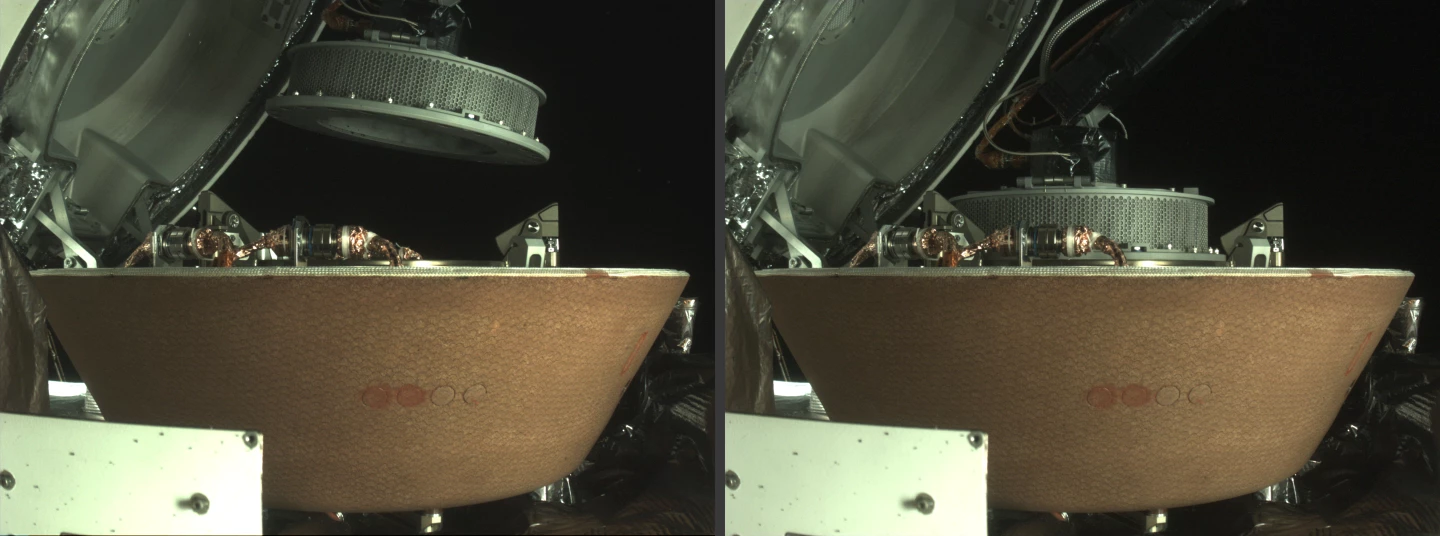NASA engineers have successfully stowed the leaking sampler head containing material from the asteroid Bennu inside the Origins, Spectral Interpretation, Resource Identification, Security, Regolith Explorer (OSIRIS-REx) spacecraft's Sample Return Capsule (SRC).
On October 20, 2020, OSIRIS-REx completed one of its most important main mission directives when it briefly touched the surface of Bennu and used a blast of nitrogen gas to stir up soil and small rocks in the microgravity environment and collected them inside the collector of its Touch-And-Go Sample Acquisition Mechanism (TAGSAM).
Unfortunately, it turned out to be a bit too successful. The original plan was to collect at least two ounces (60 g) of material, but on the day so much was collected that some of the larger rocks wedged open the mylar flap that was supposed to seal the sampler. As a result, images showed sample material slowly leaking away into space.
To avoid losing a significant fraction of the sample, NASA decided to cancel some planned maneuvers so the spacecraft would remain as still as possible and moved shifting the sampler head to the Sample Return Capsule up from early November.

According to NASA, the maneuver was carried out after mission control completed transmission of a set of commands that took 18.5 minutes to reach OSIRIS-REx across 205 million miles (330 million km) of space.
During the exercise, mission control continuously monitored images and telemetry measuring the TAGSAM's wrist alignment as the spacecraft's onboard computer operated autonomously. Though a few sample particles were seen to escape, they remained inside the sampler head, which was captured by the return capsule's capture ring on the first try on October 27. The robotic arm then backed out of the capsule to confirm that the head was caught fast.
On October 28, the spacecraft was ordered to sever the nitrogen tube to the head and then separate the head from the TAGSAM arm. The lid of the return capsule was then closed and fastened by two internal latches.
The next major mission milestone will be in March 2021 when the departure window opens, allowing OSIRIS-REx to return to Earth, where it is scheduled to arrive on September 24, 2023.
"I’m very thankful that our team worked so hard to get this sample stowed as quickly as they did," says Dante Lauretta, OSIRIS-REx principal investigator at the University of Arizona, Tucson. "Now we can look forward to receiving the sample here on Earth and opening up that capsule."
Source: NASA






